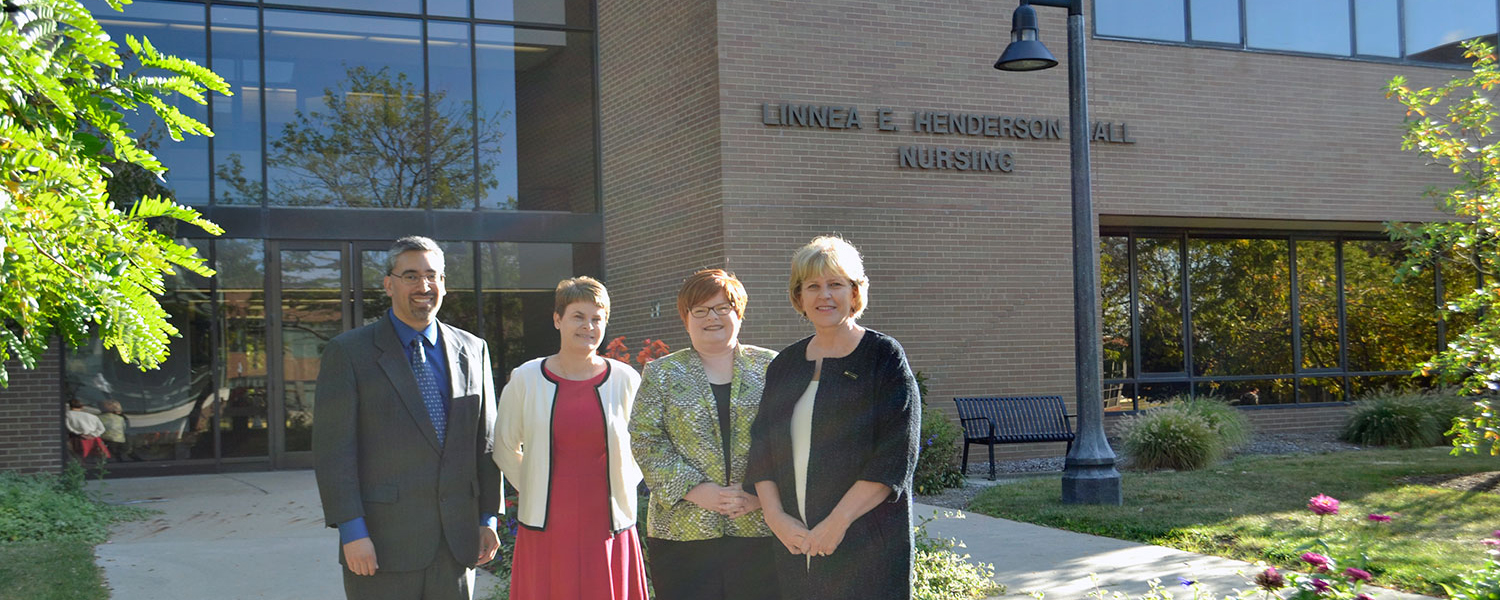Thanks to a $100,000 grant from the National Science Foundation, two Ā鶹“«Ć½ professors are researching climate change in Alaska. Elizabeth Herndon, Ph.D., and Lauren Kinsman-Costello, Ph.D., assistant professors from Kent Stateās College of Arts and Sciences, spent a week in Fairbanks, Alaska, in June studying how climate change affects the availability of plant nutrients in arctic and sub-arctic ecosystems.
The grant teams up two of Kent Stateās newest researchers.
āI think itās really great that two early-career scientists were awarded the funds to do this research,ā Herndon says.
Both Herndon and Kinsman-Costello joined Kent State about two years ago. Herndon joined the universityās Department of Geology, while Kinsman-Costello joined the Department of Biological Sciences. Their new collaborative research effort has potential implications for understanding how high-latitude peatlands will respond to climate change.
"Itās this very cold, wet environment, but temperatures at high latitudes are actually increasing at twice the rate theyāre rising anywhere else on the planet,ā Herndon says. āItās thawing the permafrost and driving shifts in vegetation and in hydrology. A lot of people are interested in how these environments will respond to the warming climate because they currently store a lot of carbon that has the potential to be released into the atmosphere and accelerate climate change.ā
Herndon says that as the temperatures rise in the arctic, plants will grow bigger and forests will expand farther north. Shrubs and other woody plants are already replacing tundra vegetation across large areas of northern Alaska, Canada and other arctic locations.
āWhat we want to know is how these factors will change the availability of nutrients, specifically phosphate, that help plants grow,ā Herndon says. āRising temperatures are drying out existing wetlands, and this is causing iron thatās dissolved in the soil water to essentially rust out as iron oxide minerals in the soil.ā
Phosphate, Herndon says, binds to iron oxides. That means that increased iron deposits could sequester phosphate, reducing the amount available to plants.
āThose plants are a sink for carbon dioxide,ā she says, āso any nutrient limitation could also limit their ability to remove CO2 from the air.ā
Soils in high-latitude regions like Alaska contain high amounts of carbon because the vegetation decomposes slowly due to cold temperatures, leaving large amounts of peat.
āAs the temperatures rise, that peat is going to start decomposing more quickly and releasing more carbon dioxide,ā Herndon says.
While the available data leave some uncertainty for future changes in the arctic, Herndon says the conventional wisdom suggests a bleak picture.
āIf the plants there arenāt growing enough, then they canāt absorb the excess CO2 released from peat decomposition,ā she says. āRight now, itās not clear what the difference will be, but the prediction is that the carbon dioxide released will be greater than what the plants can absorb from the atmosphere.ā
The team, which also includes one graduate and one undergraduate student, spent a week at the Alaska Peatland Experiment (APEX) site, just outside Fairbanks, where a team of scientists have been using an adjusted water table in a wetland to study carbon dioxide and methane release.
The scientists flooded one-third of the wetland, while draining another one-third. The differential creates the perfect model for Herndon and Kinsman-Costelloās research into phosphate and iron.
Herndon brings her iron expertise while Kinsman-Costello is versed in phosphates.
āWeāre combining our knowledge bases to understand the interactions between the two,ā Herndon says. āLauren is a great collaborator, so Iām really happy to be working on this project with her.ā
Herndon says she hopes that this pilot project will yield data that can be used to develop a longer-term project, as well as integrate with what the other scientists in Fairbanks are studying.
For more information about Kent Stateās College of Arts and Sciences, visit www.kent.edu/cas.
For more information about research at Kent State, visit www.kent.edu/research.




















